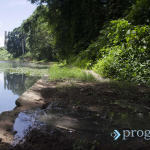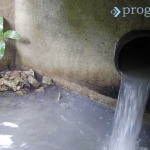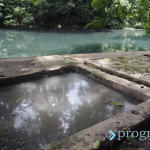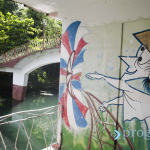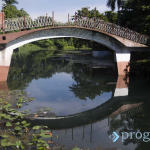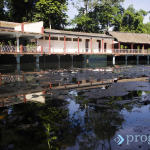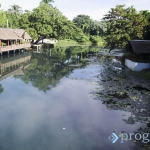
Where a river once ran… the Ariguanabo
HAVANA — “If the problems persist, the measures will be even more drastic; we’ll prosecute anyone who pollutes the river.” That’s the ultimatum delivered by Osvaldo Pino, a mathematician and environmentalist who — among other duties — watches over the health of ecosystems.
Pino represents the CITMA [Ministry of Science, Technology and the Environment] in San Antonio de los Baños, province of Artemisa, and, with the authority of being a persistent defender of a dying river, he issues the warning.
His is an urgent cause, because in the next 10 years the river could literally disappear. Eleven kilometers long and carrying 400,000 cubic meters of water, the Ariguanabo River gave life and meaning to San Antonio de los Baños, population 50,000, the birthplace of many celebrated Cubans, known as Ariguanabans.
In the next several weeks, the Provincial Management Council will review proposals and specific plans to force the polluters to halt the present situation.
However, there are reasons for skepticism. For many years now, the Ariguanabo River has been approaching a point of no return, yet nothing indicates that, despite the warnings, there is enough social awareness, institutional responsibility, and sufficient coordination to neutralize the impact of the environmental problems.
Deforestation has caused colmatage [excessive sedimentation] and the loss of shoreline forestry, entailing great harm for the biological diversity.
Along the Ariguanabo — a native word meaning “river of the Guanal region,” or “river of the palms” — there are spots where people can cross from one shore to the other by walking on the accumulated muck.
The levels of pollution are three times what they were 30 years ago. According to records kept since 1967, pollution has never reached such alarming levels.
The river is the surface expression of the Ariguanabo Basin, the only closed basin in Cuba’s western half, which gives that area a strategic character. In the cave where the Ariguanabo dies, the Southern Basin begins. For more than 15 years, wells in the Southern Basin have been polluted by the river.
“The two basins, which guarantee almost 50 percent of the water supply to Havana, are contaminated to a certain degree,” says Ariguanaban geographer Dr. Alberto Enrique García, a Havana University professor who has monitored the river’s pollution since 1981.
This year, the traditional ceremony welcoming summer had to be held not in the river but in a swimming pool. The migratory corridor in this area used to be a stopover for 11 of the 30-some species of ducks that come through Cuba. Today, ducks no longer come. Even the butterflies have disappeared.
Ricardo Alayón, a San Antonio-born biologist, keeps those records and is pained by the numbers. He celebrated his graduation in the river and ever since has devoted his life to its study. Like Alberto Enrique García, he has coordinated research and studies for decades. Together, they worked on a survey map of San Antonio de los Baños that compiles all information on the municipality, the only city in Cuba with a data base of that type.
In his article “Environmental remembrances of Ariguanabo,” Alayón says: “Twenty years ago, we used to bathe in the river […] without any concern. My children and I learned to swim in our river, as did many others in our village. Today, it is risky to dive into its polluted and dirty waters.”
The people in general miss the crystal-clear waters of the river, in which they swam, sailed and fished.
“It is not a question of sports or being snobbish. It has to do with one’s roots,” Alayón says. But “there is not sufficient environmental education to understand that we are facing a situation of urgency. It is not something that can be postponed until tomorrow because allegedly there are more pressing issues.
“We suffer from a myopic vision, because [cleaning the river] is as much a priority as putting a plate of food on the table, because that plate must have environmental quality.”
Luis Plácido Ortega, a biophysicist, is convinced that “if this river dies, the people die. And the river is dying. It is an emotional, intellectual and spiritual motive, but basically what worries us most is the people’s lives.”
From group to foundation. An impossibility?
On their own, by conviction, and in view of the accumulated problems, a group of citizens committed to the survival of their river — many of them high-level scientists — have joined in a formal group of activists calling themselves “Friends of the River.”
This group has studied the river for decades and has put together dozens of concrete projects awaiting execution, with actions focused on the river and the forest.
For five years, the group has waiting to become the Ariguanabo Foundation, so it may have a legal framework in which to put into practice plans and resources that were not accomplished by other means or were not accomplished effectively enough. Singer Silvio Rodríguez is among them but the group has had an uphill struggle.
One year ago, in an interview with the magazine OnCuba, Rodríguez described and denounced the bogging down of the project.
“We have gone through all processes,” Rodríguez said. “We have sent out all necessary letters; we have been received by all officials and all of them — smiles on their faces — have told us that everything is ‘perfect.’ Regrettably, it is a virtual ‘perfection,’ because the Foundation has not been approved.
“I even donated to this project the cultural award that ALBA presented to me in 2010. But everything has been futile. Nobody seems to have what it takes to tell us, ‘The Foundation is now legal.'”
The Ariguanabo Foundation’s objectives would be “to contribute to the protection, conservation and development of the natural and cultural patrimony in the geographic region defined as the Ariguanabo Basin, and to favor the cultural, material and spiritual development of its inhabitants.”
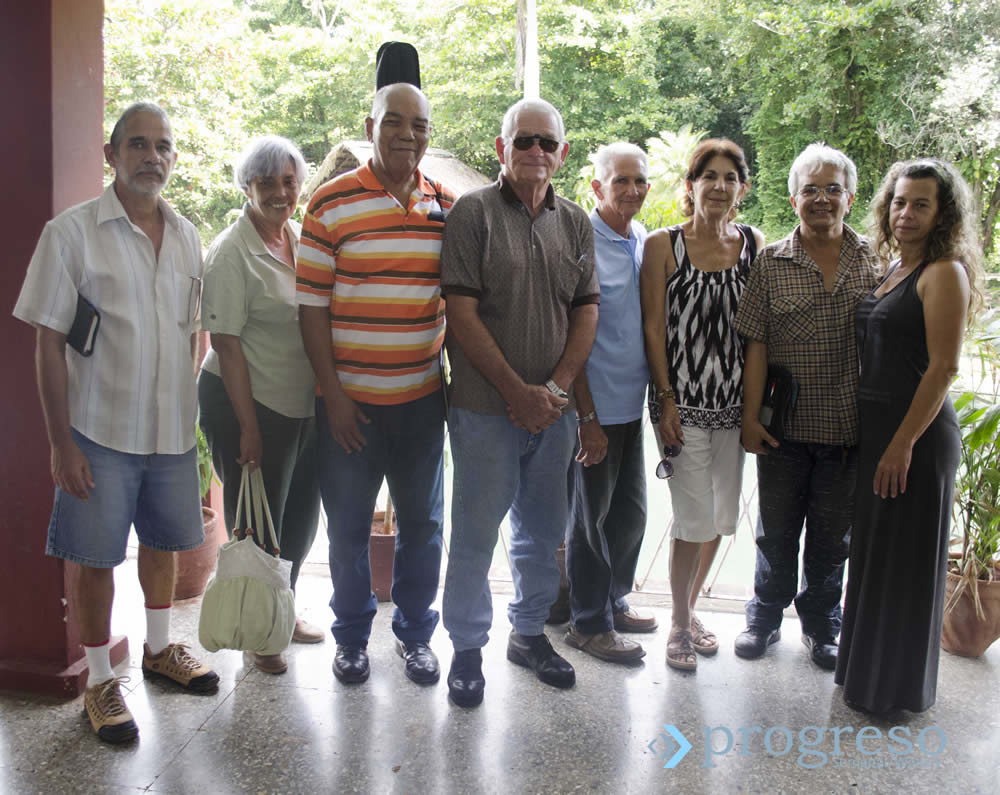 Even in the face of the disaster, nothing happens. Noticeable among the authorities and the members of the community are a lack of communication, prejudice, and scant awareness of the danger.
Even in the face of the disaster, nothing happens. Noticeable among the authorities and the members of the community are a lack of communication, prejudice, and scant awareness of the danger.
The typical difficulties of local governments in exercising an effective management of resources for policies of local interest and extent also seem to affect the situation in what is known as “the village of humor.”
Indolence, ignorance or inefficiency?
Osvaldo Pino considers that the problem has much to do with the fact that “since 1974, the river, which runs through San Antonio, belongs to Water Resources in Artemisa; the riverbank forest does not belong to San Antonio but to Forestry Enterprises; and San Antonio’s UEB [Basic Entrepreneurial Unit] is called Costa Sur. We at CITMA do what we’re told by our superiors, who seem unable to understand the problem.”
In view of the structure created in the provinces of Mayabeque and Artemisa, CITMA is part of the government. Before, it answered vertically to a provincial delegation and there was some sort of balance. Now there is none, say García and Mario Campos, a retired CITMA geologist.
Campos believes that, given the river’s central role (real and potential) in the life of San Antonio de los Baños, “the first concern of the mayor of this municipality is the environmental problem.”
Pino said that the Councils of State and Ministers will soon designate the river and its environs as a Protected Natural Landscape, part of the National System of Protected Areas.
“We have identified the problems, but can’t act on them,” Pino said. “Once the area is declared an ecological zone, we’ll be able to.”
Progreso Weekly asked Silvio Rodríguez if this situation was the result of indolence, ignorance or inefficiency.
“I think it’s a combination of all three,” he answered, “although it all comes from a lack of vision. That lack prevents a mobilization of feelings and, of course, of willingness.
“We can speculate a lot, tell many anecdotes, talk about adversities and frustrations, but after we put all the elements into the crucible and put it to the fire, all we find in the bottom is pure and hard ignorance.
“We can reprint the words of great thinkers and revolutionaries, make speeches for the press and posterity. But in our schools we must teach that losing a river or a forest is worse than losing a loved one, because it’s like losing a family, a nation, a culture of natural events, of history and reasons why a town exists, as in the case of San Antonio and its almost extinct Ariguanabo River.
“A long time ago, I wrote a song based on a previous song titled ‘I come from a place where a river runs,'” Rodríguez said. “My second version was titled ‘I come from a place where a river ran,’ and I didn’t release it because we had spent years trying to keep the river alive, taking officials to see it, meeting with several ministers, and I thought that — when I least expected it — there might be a positive reaction, some understanding, some gesture.
“And if the situation at the time did not permit taking care of it, [the government] should at least allow those of us who are committed to the Ariguanabo to create a Foundation that would work shoulder to shoulder with government institutions, not against them. But later I grew tired, and last December I published the song in my blog, hoping that a missile would do what a song couldn’t.”
In Artemisa, site of the experiments related to the “Actualization of the Cuban economic model,” we find a conflict of local power, where the authorities controlling the environment, health services, civilian society, the community and academia agree — not without contradictions — on the need to act urgently to save the river.
But no agency has the necessary autonomy and therefore there is no effective mechanism to build a consensus, come together and act.


